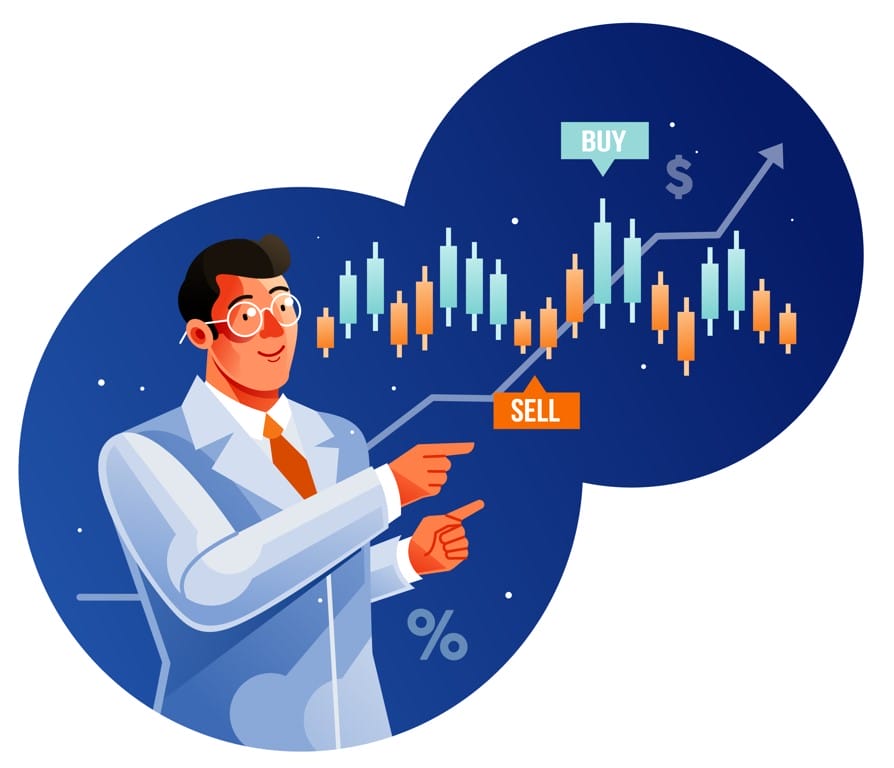The Eurozone Producer Price Index (PPI) can be a game-changer in the world of forex trading. If you’re scratching your head wondering how this economic indicator can give you an edge, you’re in the right place. This article will break down everything you need to know about the PPI, its significance, and how you can leverage it to enhance your trading strategy.
What is the Eurozone Producer Price Index?
Understanding the Basics
The Eurozone Producer Price Index measures the average change in the selling prices of goods and services by producers in the Eurozone. It’s like a sneak peek into the price trends before they hit the consumer level. If producers are charging more, it’s only a matter of time before those costs trickle down to consumers.

Why Should You Care About the PPI?
You might be thinking, “Prices are going up, so what?” Well, in forex trading, knowing the direction of price movements can be incredibly valuable. The PPI is a leading indicator of consumer price inflation, which central banks closely monitor to make policy decisions. These decisions can, in turn, impact currency values.
How the PPI Affects Forex Trading
Inflation and Currency Value
When producer prices rise, it’s a red flag for inflation. Central banks might respond by hiking interest rates to control inflation, making the currency more attractive to investors. Conversely, falling PPI can signal deflationary pressures, potentially leading to lower interest rates and a weaker currency.
Market Sentiment
The PPI can influence market sentiment. Positive PPI data might boost investor confidence, leading to increased demand for the currency. Negative PPI data, on the other hand, can spark fears of economic slowdown, reducing demand.
Interpreting the PPI Data
Month-on-Month vs. Year-on-Year
PPI data is usually presented as month-on-month and year-on-year changes. Month-on-month gives you a snapshot of short-term trends, while year-on-year provides a broader perspective. This distinction is crucial because short-term fluctuations might not reflect the overall trend, whereas year-on-year changes provide a more stable and comprehensive view.
Core PPI
Core PPI excludes volatile items like food and energy. It gives a clearer picture of underlying inflation trends. As a forex trader, keeping an eye on core PPI can help you anticipate long-term market movements. Volatile items can distort the overall PPI, leading to potentially misleading signals about the underlying economic conditions.
Using PPI to Predict Market Moves
Trading the News
Trading the news involves making trades based on economic data releases. PPI releases can cause significant market movements. By staying informed about upcoming PPI reports, you can position yourself to capitalize on these movements. The volatility around news releases can offer lucrative opportunities if approached with a well-thought-out strategy.
Technical Analysis and PPI
Technical analysis involves studying price charts to identify patterns and trends. Combining technical analysis with PPI data can provide a more comprehensive trading strategy. For example, if the PPI indicates rising prices and your technical analysis shows an uptrend, you might consider going long on the currency. Conversely, if the PPI suggests declining prices and your technical analysis confirms a downtrend, shorting the currency could be profitable.
Strategies for Trading the Eurozone PPI
Pre-Release Positioning
Before the PPI data is released, analysts and traders make predictions based on other economic indicators. By following these predictions, you can position yourself ahead of the release. However, this strategy carries risk if the actual data deviates from expectations. The market can react violently to surprises, so it’s crucial to manage your risk carefully.
Post-Release Reaction
If you prefer a safer approach, you can wait for the PPI data to be released and then trade based on the market’s reaction. This strategy requires quick decision-making and execution but can be less risky than pre-release positioning. Observing how the market initially responds can provide valuable insights into future price movements.
Risk Management in PPI Trading
Setting Stop-Loss Orders
Volatility can spike during PPI releases, making it crucial to set stop-loss orders to protect your capital. Stop-loss orders automatically close your position if the market moves against you, limiting your losses. This safety net can prevent significant losses during unpredictable market swings.
Diversifying Your Trades
Don’t put all your eggs in one basket. Diversifying your trades across different currencies and economic indicators can reduce risk. For instance, if you’re trading the Euro based on the Eurozone PPI, consider also trading another currency based on its economic data. Diversification helps spread risk and can improve overall portfolio performance.
Common Pitfalls to Avoid
Overtrading
Excitement over potential profits can lead to overtrading. Stick to your trading plan and avoid making impulsive decisions based on short-term market movements. Overtrading can deplete your capital quickly and increase the risk of significant losses.

Ignoring Other Indicators
While the PPI is important, it’s just one piece of the puzzle. Ignoring other economic indicators and global events can lead to incomplete analysis and poor trading decisions. Always consider a comprehensive view of the market, incorporating multiple indicators to form a well-rounded strategy.
Tools and Resources for PPI Trading
Economic Calendars
Economic calendars list upcoming data releases and their expected impact. Using an economic calendar can help you stay on top of PPI releases and plan your trades accordingly. These calendars often provide analyst forecasts, which can offer insights into potential market reactions.
News Feeds and Analysis
Subscribing to news feeds and analysis from reputable sources can provide valuable insights into market expectations and reactions to PPI data. This information can help you make more informed trading decisions. Real-time updates and expert commentary can offer a deeper understanding of the market dynamics at play.
Real-Life Examples of PPI Impact
Historical Case Studies
Looking at historical data can provide insights into how the PPI has influenced currency movements in the past. Analyzing these case studies can help you develop better trading strategies. Historical trends can reveal patterns that might repeat, offering clues for future market behavior.
Recent Trends
Examining recent PPI data and market reactions can give you a sense of current trends. Are we in a period of rising prices or deflationary pressures? Understanding the current economic environment is crucial for successful trading. Recent trends can provide a real-time gauge of market sentiment and potential future movements.
The Future of PPI in Forex Trading
Technological Advancements
Advancements in technology, such as algorithmic trading and AI, are changing the landscape of forex trading. These technologies can analyze vast amounts of data, including PPI, to make trading decisions in milliseconds. Automated trading systems can execute trades faster and more efficiently than human traders, potentially improving profitability.
Global Economic Shifts
Global economic shifts, such as trade wars and geopolitical tensions, can impact the PPI and, by extension, forex markets. Staying informed about these shifts can help you anticipate changes in the PPI and adjust your trading strategies accordingly. Understanding the broader economic context can provide valuable insights into future PPI trends.
Conclusion
The Eurozone Producer Price Index is more than just a number; it’s a powerful tool that can significantly impact forex trading. By understanding how to interpret and use PPI data, you can make more informed trading decisions and potentially increase your profits. Remember, trading always carries risks, but with the right strategies and risk management practices, you can navigate the forex market more confidently.
FAQs
1. What is the Eurozone Producer Price Index (PPI)?
The Eurozone Producer Price Index measures the average change in selling prices received by domestic producers for their output. It’s a key indicator of inflation at the wholesale level.
2. How does the PPI affect currency values?
Rising PPI indicates increasing inflation, which can lead central banks to raise interest rates, making the currency more attractive. Conversely, falling PPI can signal deflation, leading to lower interest rates and a weaker currency.
3. What is the difference between Core PPI and regular PPI?
Core PPI excludes volatile items like food and energy prices, providing a clearer view of underlying inflation trends. Regular PPI includes all items.
4. How can I use the PPI in my trading strategy?
You can use PPI data to anticipate central bank actions on interest rates, gauge market sentiment, and inform your technical analysis. Strategies include pre-release positioning and trading based on post-release reactions.
5. What tools can help me stay informed about PPI releases?
Economic calendars, news feeds, and analysis from reputable sources can help you stay on top of PPI releases and market reactions, allowing you to plan your trades more effectively.





